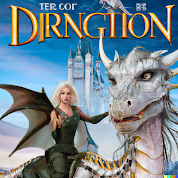Around the turn of the millennium, as personal computers developed the capability to run more advanced programs, the art and illustration markets experienced a revolution. Programs such as Adobe Photoshop and Corel Paint suddenly enabled artists to create images at an unprecedented speed and scale. However, the impact of these technological breakthroughs also brought new challenges. The influx of new artists and the speed of production led to increased competition and decreased pay across much of the illustration industry. Artists were forced to adapt to new mediums and expectations.
Fast forward to today, and the art world is once again being shaken by digital technology, this time with the rise of artificial intelligence (AI) in the creation of art. With AI art generators, anyone can now create art with just a few words. This technology has ignited a deluge of new debates and controversies regarding the nature of art and originality.
AI: Art Thief?
One of the main controversies is the potential for AI to "steal" other people's art and styles to create new works. Essentially, A.I. art generators, following a text or visual prompt, identify and break down relevant source material, then reconstruct that source material into something new. The end result is a visual image, which many argue is completely original, based on the prompt that was provided. While it may be argued that the final image is original, the controversy revolves around the concept of "style." A.I. art is most successful when it learns from existing artists and attempts to mimic their skills and art styles, which many artists have spent decades developing. Exploring this idea, I attempted to create A.I. art in the style of Michael Whelan using three different A.I. generators: Stable Diffusion, Wonder, and Dall-E. I used the prompt, "a fantasy book cover depicting a princess riding on a white dragon in the style of Michael Whelan." The results? As you can see, the A.I. generated images fall short of book cover quality and lack the refinement of a Whelan illustration (and these were the best images of many attempts). Also noticeable are many flaws in anatomy of both the humans and dragons. While some ignominious art directors or publishers may find such images acceptable, it seems to me that A.I. is not yet fully capable of mimicking artists, at least not in the hands of the average user. However, I believe that as the algorithms and technology advance, A.I. generated art will become indistinguishable from the work of many well-known artists and this controversy will become very relevant.
AI Images and Copyright
Another issue surrounding AI-generated art is the uncertainty surrounding copyright laws. Currently, the copyright laws regarding AI-generated images are undefined and untested. In 2022, the U.S. Copyright Office denied copyright claims for AI-generated works of art on the grounds that they lack human authorship, which is a requirement for copyright protection. The clarification and establishment of legal precedents regarding these works will only occur as more cases are brought to court.
The Value of "Input" in Art
The Future of AI in the Art World
Despite the challenges posed by AI, its significance in the art world is expected to grow. However, the exact impact of this technology on the industry and its artists is yet to be determined. It remains to be seen whether AI will displace artists and reduce their pay, or if it will lead to new opportunities and elevate the quality of art.
In my own art practice, I am investigating ways to incorporate AI to enhance, not replace, my creative process. I am personally not drawn to the idea of using AI-generated art as the final product, but I do see potential in using AI as a tool to support my artistic ideas and sketches. I am planning to delve into this topic further in a future post.
Conclusion
The rise of artificial intelligence in the art world is presenting both challenges and opportunities. While AI has the potential to revolutionize the way art is created and produced, it also raises important questions about copyright, originality, and the role of artists in the industry. It will be interesting to see how the art world continues to evolve and adapt to these technological advancements in the years to come.





No comments:
Post a Comment